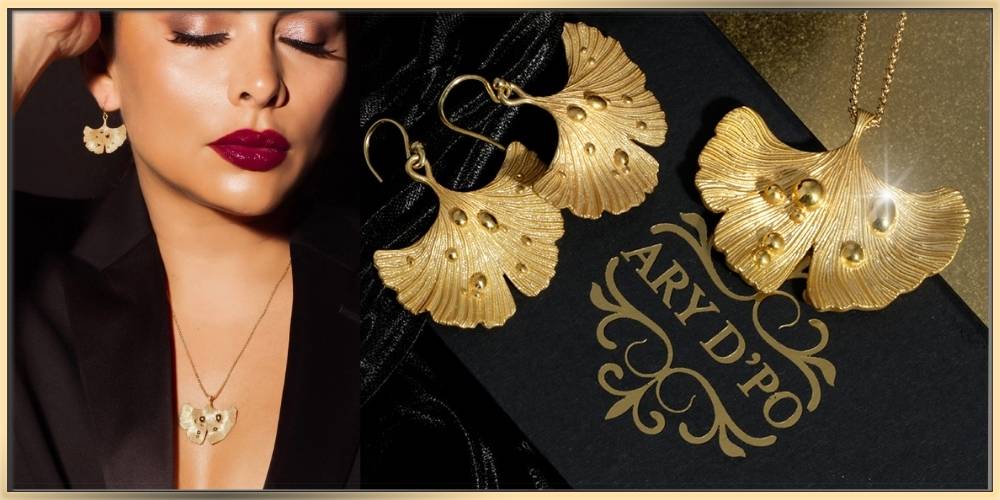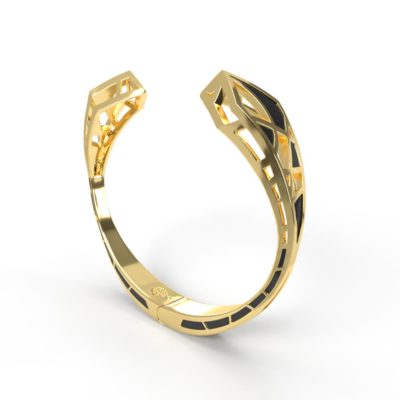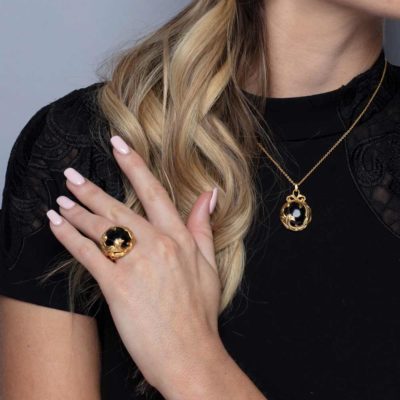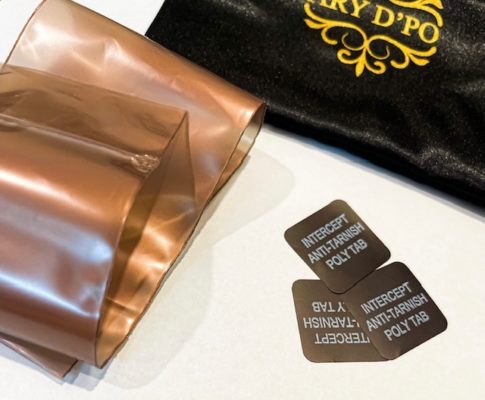Fun Reading, Tips & Recommendations
How To Store Your Jewelry To Prevent Tarnishing And Damage
If you own jewelry, it makes sense that you want to keep it safe from discoloration or damage – especially if it’s worth a lot or holds special meaning for you. One of the best ways to keep your pieces safe and clean is to ensure you’re storing them properly. In this article, we have some foolproof advice on how to store your jewelry to prevent tarnishing and other damage.
What is tarnishing?

You may have noticed some of your favorite pieces of jewelry have lost their color over time. When you wear jewelry often and it becomes exposed to moisture or air, it can become less shiny and look like it has a dull gray or black film on its surface. Luckily, jewelry tarnishing can be reversed by polishing the piece. You can use things like baking soda or jewelry cleaning products to restore it to its original shade.
However, it’s worth noting that tarnishing isn’t the only way that jewelry can begin to show signs of aging. Your favorite necklaces may also become scraped, scratched, dented, or warped over time. These can be much more difficult to reverse than simple tarnishing. To prevent your jewelry getting damaged or tarnished, it’s vital that you store it safely.
What types of jewelry do you have?
There are many types of popular jewelry metals out there, and some are more prone to damage than others.
Platinum jewelry
Platinum is known for being very durable and long lasting. While it’s unlikely to bend out of shape as easily as other metals, it’s still fairly soft and can be prone to small scratches. It also will fade with age. However, many people like this appearance as it makes it look frosted, matte, or like an antique. It’s sometimes called a ‘patina’.
If you don’t like the look of the patina, you can slow down its development by taking off your ring before exposing your hands to water, harsh chemicals, body lotions and other cosmetics, or anything that might scratch it. If you want to, you can also remove the patina by polishing it back to its original shiny state or getting it refinished by a jeweler.
Gold jewelry
Gold is a very soft metal. In fact, it’s too soft to turn into jewelry on its own. That’s why most gold jewelry is made of a gold alloy. That’s gold which is combined with brass, nickel, or other metals that make it stronger.
The more karats the piece has, the more gold is in the mix. This means that while 18 karats is more pure than 14 karats, the higher karat piece will be softer and more vulnerable to misshaping than the 14 karat piece.
Silver jewelry
Like gold, silver is very soft. That’s why most silver jewelry is made from sterling silver – silver mixed with other metals, such as copper. As a result, silver is known for being particularly prone to tarnishing. When the copper in the alloy is exposed to the air, it reacts with oxygen. This means that the silver can turn green or black – which usually isn’t a great look!
The best way to avoid silver tarnishing is to keep it away from moisture, which can speed up the oxidation process. Many people find it helpful to store their silver with silica packets and pieces of chalk, which soak up the surrounding humidity, or use anti tarnish strips, which don’t harm the metal, but neutralize the gases that cause tarnish.
Plated jewelry
To get around the high price point of solid gold jewelry, many people choose to buy gold plated pieces instead. These are made from a strong underlying metal, such as brass or sterling silver, which is then topped with a thin (regular plating) or thicker (vermeil) layer of gold. Rhodium plated jewelry is also a popular alternative.
When plated jewelry is new, it looks almost exactly like solid jewelry. Unfortunately, it’s hard to stop the plated layer from wearing down over time and exposing the metal underneath. This is why, if you own plated necklaces, rings, or earrings, you need to be very careful about how you store your jewelry to prevent this wear and tear.
Gemstone jewelry
A shimmering gemstone is a gorgeous thing, but you also need to be careful about how you look after these pieces. If you own jewelry with gemstones, be sure to keep these pieces in separate boxes and compartments to each other and in a cool, dark environment.
Some gemstones (such as diamonds) are very hard, and their sharp corners can damage your other pieces. Be especially careful with soft minerals, like pearls, amber, and turquoise. It’s also important to keep your gems out of the light. Some gemstones, like opals, can become damaged by brightness and lose their clarity.
How to store jewelry to prevent tarnishing and other damage
Even though some types of metal are more prone to tarnishing than others, most jewelry storage techniques will apply to any jewelry collection – whether you’ve got a large set of precious pieces, or you prefer casual costume jewelry. Here are some of the best tips for taking care of your collection.
Store your jewelry in a dry and dark place
Light, heat, and moisture are often the main culprits when it comes to jewelry tarnishing. You can’t just store your jewelry anywhere. It should be away from direct sunlight, which can cause fading. It should also be in a room that isn’t too hot and humid, such as the bathroom. The moisture in the air can cause tarnishing, especially on silver.
Keep your jewelry organized
It sounds simple, right? Unfortunately, it’s all too easy to take off your jewelry at the end of a long day and just throw it down on your vanity. Keep in mind that your pieces can easily scrape on each other and become damaged when they’re stored in a big tangled pile.
Avoid damage and tarnish to your necklaces by always doing up the clasp and hanging it on a dedicated hook. You can also use hooks to store your bracelets. In a similar vein, make sure you don’t just take off your earrings and throw them down anywhere. Put the backs back on and place them in a jewelry box or bag so they stay safe.
Use a compartmentalized jewelry box
A jewelry box that’s separated into compartments is probably the best way to store your jewelry to prevent tarnishing. At the end of the day, you can put each item in its own little compartment. This way, you can keep your soft amber bracelet away from your sharp diamond earrings, avoiding any unnecessary scrapes and dents. Be sure to choose a jewelry box that’s lined with a soft fabric, like felt or velvet.
Use silica or chalk to absorb moisture
Even if you store your jewelry in a location that’s fairly dry, there will probably still be some humidity in the air. You can add some things into your jewelry box to keep your silver from tarnishing. Silica gel packets are popular – and if you bought some shoes recently, you might already have some. Otherwise, chalk should do the trick too.
Keep silver in ziplock bags
If you live in a humid location, chalk or silica may not work as well as you’d hoped. If you’re having real issues with your silver tarnishing, you can also try storing it in small plastic bags, ideally, using the ones with anti-tarnish coating. Place each necklace, ring, bracelet, or pair of silver earrings in its own ziplock bag and make sure you push all the air out before sealing it up. This should keep it airtight and protected from moisture.
Keep jewelry boxes and bags
Most jewelry comes in a little felt box or drawstring bag. These can really come in handy when you’re traveling, because your jewelry box is probably a bit too big to take on holiday with you. Plus, taking all of your precious jewelry on holiday isn’t usually a good idea. Hang onto these little boxes and bags, because you never know when you’ll need them.
Cleaning your jewelry
One of the most effective ways to ensure your jewelry stays free from tarnish is to keep it clean. It’s just as important to also keep your pieces dry.
We recommend cleaning your jewelry every week or two (or when you feel like it needs it).
Give your non-plated pieces a good wash, polish, and dry. Many people use a method similar to this:
- Mix a little baking soda or gentle liquid dish soap or bleach-free laundry detergent with warm water until it forms a paste.
- Use a cloth or old toothbrush to coat your jewelry in the solution. Use a little bit of pressure to make sure you’re getting rid of any dirt or other spots.
- Rinse in water.
- Leave to air dry on a paper towel. It’s important to leave your pieces out until they are 100% dry, because you don’t want to bring any dampness into your jewelry box.
- You can use a polishing cloth (use it for non-plated jewelry only) to give it a lovely finish and make it really shine.
To clean your plated jewelry, gently wipe it with a soft cotton cloth. If it requires more cleaning, use warm soapy water and carefully dry it with soft cotton fabric.
It’s pretty easy! The most important step is making sure you wait until it’s dry to put it away in the box. If you keep your jewelry clean, dry, and carefully stored, you’ll be well on your way to keeping your favorite pieces tarnish free!




